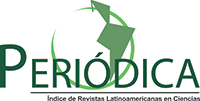RA V15 N2, Message from the Editor-in-Chief (May - August 2025)
Keywords:
--Abstract
LATIN AMERICAN JOURNAL OF QUALITY CONTROL, PATHOLOGY AND RECOVERY OF CONSTRUCTION
http://www.revistaalconpat.org
It is a source of satisfaction and joy for the ALCONPAT Journal team to see the publication of the second issue of our fifteenth year.
The objective of the ALCONPAT Journal (RA) is the publication of citable production (basic or applied research, and reviews), documentary research and case studies, related to the topics of our association, that is, quality control, pathology and recovery of constructions.
This V15 N2 edition begins with a paper from the United States, where Prasad Rangaraju shows us this review, which summarizes the availability and processing of glass waste and highlights its impact on the properties of concrete in its fresh and hardened state. The concrete industry is increasingly looking for sustainable supplemental cementitious materials (SCMs) to partially replace Portland cement, as traditional SCMs such as fly ash and slag are becoming increasingly available. SCMs improve the mechanical and durability properties of concrete, while reducing its carbon footprint. Processed glass waste has emerged as a promising alternative pozzolan, backed by extensive research and field applications. In response, ASTM developed C1866/C1866M-20, a standard specification for the use of ground glass pozzolan in concrete. The potential of ground glass pozzolans as viable SCMs for the production of low-carbon concrete is also discussed.
In the second work, from Australia, Didar S. Chema presents the feasibility of using delitiated B-spodumene (DBS), in combination with conventional SCMs - slag (GGBFS) as a by-product of low calcium fly ash, for sustainable non-structural geopolymer concrete applications such as: backfill, base material and non-structural concrete applications (pedestrian path, rest areas, filling traffic islands, etc.) with a reduced CO2 footprint. Rechargeable batteries that store energy in the form of chemicals and convert it into electrical energy on demand are considered the eco-friendly alternative. The key ingredient in these batteries is lithium. Lithium is processed from natural a-spodumene to B-spodumene. DBS in its leached form as lithium slag, is composed of quartz (SiO2) and aluminum oxide (Al2O3), as fly ash. They can be potential alternative SCMs for DBS conventional concrete / geopolymer applications, either fully or partially, in combination with other common supplemental cementitious materials.
In the third article, Almir Barrios and colleagues from Brazil, they present a case study of a commercial building built in Rio Grande do Sul, composed of smooth prestressed slabs with greased cables, where pathological manifestations occurred even during the construction phase, such as excessive deflections, cracks in the prestressed slabs and some partial ruptures of structural elements. The article presents the pathological manifestations found in the structural analysis, as well as a succinct presentation of the reinforcement techniques used. Prestressed smooth slabs with greased cables are widely used in Brazil due to their advantages. However, the complexity achieved with the use of prestressed buildings often results in highly complex projects and non-trivial considerations in the engineer's daily work.
The fourth paper in this issue is from Brazil, where Almir Barrios and colleagues present the case study of a commercial building built in Rio Grande do Sul, composed of smooth prestressed slabs with greased cables. Some pathological manifestations, such as excessive arrows and fissures in the slabs, were observed even in the construction phase. The description of the structural reinforcement solutions used in the slabs is presented, such as bonded blankets, inserted carbon fiber tapes and metal reinforcements with external pretension. At the end of the reinforcement work, load tests were carried out on the slabs, which demonstrated the effectiveness of the solutions adopted. Prestressed smooth slabs with greased cables are widely used in Brazil due to their advantages. However, the complexity achieved with the use of pretense often results in projects with greater complexity.
The fifth article, by Olcay Gurabi Aydogan and colleagues, comes from Turkey. The objective of its study is to minimize the amount of free chlorides responsible for corrosion through the use of different binders, and to reach the level of free chlorides allowed by the relevant standards. The chloride content was determined using the X-ray fluorescence method. It was observed that the chloride binding capacity increased as the CaO/Al2O3 ratio decreased to a value between 4 and 6. On the other hand, it was determined that the chloride binding capacity decreased slightly when the CaCO3/Al2O3 ratio increased from 0 to 0.3-0.5, although no significant effects were evidenced for values above 0.5. Most of the binders evaluated presented results below the maximum limit of chlorides established by the standards, which constitutes an important opportunity for the use of seawater as mixing water in reinforced concrete.
In the sixth paper, from the United States, Ahmad K. Abdelrazaq presents structural engineering, construction innovations, and key challenges in the design and construction of Malaysia's upcoming landmark. Merdeka 118 is a large-scale mixed development that includes a 118-storey, 679.9m-tall mega-tall tower, the second tallest tower in the world. The effective application of high-performance concrete (HPC) up to C105 has significantly optimized the size of structural elements and improved building economics by maximizing premium floor space. HPC up to C105 has been applied to the walls of the mega column and core to optimize the size of the elements and improve the gravity resistance capacity and lateral loading of the elements. To ensure HPC delivery at the highest level, extensive planning programs, testing programs, and quality assurance/quality control (QA/QC) programs have been developed. The challenges at Merdeka Tower 118 have pushed the boundaries of HPC utilization in Malaysia from the Petronas twin towers.
The seventh article by Thaung Htut Aung, comes from Thailand, and presents a case study on the evaluation of the performance of a tall building quantitatively in terms of damage by structural and non-structural components, cost of repair and time of repair, following the methodology mentioned in FEMA P-58, which are precursor guidelines of resilience-based design. In current seismic design practice, safety is primarily considered to measure the performance of the structure. The recovery of the functionality of the structure and resilience are not well addressed in current design approaches. Although current performance-based seismic design approaches explicitly assess the structural performance of buildings for different levels of earthquakes, functionality and post-earthquake consequences are not well assessed in the design process. In the case of extreme earthquakes, although the global and local responses of the structural system of buildings to prevent total or partial collapse of the building are generally checked, the extent of damage to non-structural components, the contents of the building, the time and cost of repair, and casualties are not specifically analyzed.
The eighth work in this issue is from the United States, where Pericles C. Stivaros, who discusses various repair, design, and maintenance practices to produce durable and sustainable concrete structures. Emphasis is given in the assessment and evaluation of deteriorated concrete structures. The principles of evaluation and repair are demonstrated through case studies of deteriorated concrete structures. Concrete preservation is an important consideration for maintaining economic and natural resources. Concrete, like almost any other building material, is susceptible to deterioration during its lifetime. Repairing and extending the life of concrete structures contributes to the overall sustainability of materials and resources. Evaluation and repair decisions should be based on a thorough evaluation consisting of visual inspection, non-destructive testing (NDT), laboratory testing, and a lifetime assessment analysis.
The article that closes the edition is by Johann Plank, from Germany, where he present the two main possibilities for reducing the CO2 footprint of cement via clinker substitution using supplementary cementitious materials (SCMs) or carbon capture&storage. Engineering properties of mortar prepared from binders holding SCMs indicate that substantial clinker replacement is possible, e.g. using calcined clay or slag. Yet, such comparable properties can only be achieved by applying suitable chemical admixtures (superplasticizers, accelerators, etc.). The second option, carbon capture and storage (CCS), allows us to maintain the current cement production processes, but it is expensive and significantly increases the price for cement. For widespread application of SCMs in cement, novel admixtures are compulsory to facilitate successful transition to low carbon binders. This paper compares both alternatives for CO2 reduction and suggests potential solutions for existing technology gaps.
This is a special issue of Alconpat Journal where some of the best papers from the fourth Raikar Conference that was held in Mumbai, India from December 12 to 14, 2024 are published. Our Journal has as Guest Editor in this issue Dr. Surendra Manjrekar who was the Chairman of the conference and who, together with his team, did an excellent job in the selection of papers. In a future issue we will have more selected articles from this important event. We are sure that the articles in this issue will constitute an important reference for those readers involved with issues of evaluations and characterizations of materials, elements and structures. We thank the authors participating in this issue for their willingness and effort to present quality articles and comply with the established deadlines.
At the close of this V15 N2 2025, 15 years after starting operations, our performance as Alconpat Journal was finally rewarded with our inclusion in one of the two best indexes for journals such as Elsevier's Scopus. We already have a modest impact factor (0.3), which I am sure will increase thanks to you, our readers and the quality of our articles. Our membership of Scopus has its historic beginning on December 29, 2022, the date on which we received approval from Elsevier. We hope to apply for the Journal Citation Reports in 2025, which is the index with the highest international coverage and quality.
On Thursday, May 15, we will have an academic celebration for the 15th anniversary of Alconpat Journal, from 9:00 a.m. to 1:00 p.m. GMT-6, where we will honor members of the Editorial Committee and outstanding authors who have accompanied us throughout this time. You are invited, come through the following link: https://us06web.zoom.us/meeting/register/wqroALOmS4a_YiLmP6atNg#/registration
These are reasons to celebrate for our community that has made a scientific investment in our journal looking forward to moments like this. Congratulations to all.
By the Editorial Board
Pedro Castro Borges
Editor-in-Chief
Downloads
References
--
Published
How to Cite
Issue
Section
License
_______________________________
License in effect from September 2020
You are free to:
- Share — copy and redistribute the material in any medium or format for any purpose, even commercially.
- Adapt — remix, transform, and build upon the material for any purpose, even commercially.
- The licensor cannot revoke these freedoms as long as you follow the license terms.
Under the following terms:
- Attribution — You must give appropriate credit , provide a link to the license, and indicate if changes were made . You may do so in any reasonable manner, but not in any way that suggests the licensor endorses you or your use.
- No additional restrictions — You may not apply legal terms or technological measures that legally restrict others from doing anything the license permits.
Notices:
You do not have to comply with the license for elements of the material in the public domain or where your use is permitted by an applicable exception or limitation .
No warranties are given. The license may not give you all of the permissions necessary for your intended use. For example, other rights such as publicity, privacy, or moral rights may limit how you use the material.

















.png)














